In Part 1 of this series we outlined the role of the CEO and how an open attitude to change and their ability to communicate a shared vision are key attributes for success. In Part 2, the focus is on the constituent parts of the C-suite, framed by the underlying question, “Who should be involved in making executive decisions in today’s tech-driven markets?”
As we pointed out previously, the C-suite looks very different today compared with 20 years ago. One could even say it’s looking a little crowded. The accelerated importance of technology in every business and our daily lives having become so integrated with the internet have forced many changes upon the boardroom composition, creating entirely new roles such as Chief Social Media Officer and Chief Data Officer (not to mention the more wacky variants coming out of Silicon Valley).
What should make up today’s C-suite?
It’s a pertinent question as organizational structures are shifting significantly. The classic leadership hierarchy is being replaced by a more democratic, flatter structure, particularly among tech companies with a lower average age of executive. Middle management is a disappearing faculty, reducing overheads and allowing the C-suite to expand with more specific roles taking ownership of new functional areas. Bigger doesn’t always mean better, but an expanding C-suite does have the advantage of creating an intellectual edge over competitors, while also keeping people happy with their organizational status.
Currently, the stalwarts at the top consist of:
- CFO (chief financial officer)
- CCO or CMO (chief customer / marketing officer)
- COO (chief operating officer)
- CEO (chief executive officer)
While certain responsibilities overlap, each of these positions is integral to the health of a business.
Other executive job titles
There are then established roles which tend to linger below main board level, namely CTO (chief technology officer) and CPO (chief people officer).

Chief People Officer (CPO)
When we speak to our clients, many of them cite that people and finance are the single biggest contributors to growth (along with a little luck!). CEOs, however, are often despondent when it comes to talking about HR, so what about the Chief People Officer? It sounds suspiciously like a glorified HR role, but that would be like saying your CFO is nothing but an accountant. In reality, the CPO is responsible not only for a company’s staff but also its culture, which means ensuring that its values, ethics, mission, and working environment are both communicated and executed in such a way that employees can flourish.
This is no easy task: according to Pat Wadors, chief human resources officer at LinkedIn, 80 percent of a company’s operating expenses are talent related, so the pressure is on the CPO to get it right and get it right quickly. We concur: the role of the CPO, particularly in this marketplace, is essential if you want to make the leap from good to great.
There are, however, a handful of new roles which also deserve their place around the boardroom table but in some industries are still regarded as “optional”: Chief Revenue Officer and Chief Data Officer.
Chief Revenue Officer (CRO)
The Chief Revenue Officer will typically head up business development, sales/revenue generation and growth strategy. The combination of strategy and implementation is a challenging one but also accepts that routes to sales have changed exponentially. Ten years ago, who would have imagined businesses that drive 80% of revenue via Instagram or shop-based retailers that have shifted almost 50% of sales online whild still maintaining a heavy shop portfolio? As a result, these individuals need to be competent all-rounders, able to find solutions across multiple channels.
The secondary challenge is that their focus is not, as it was for their predecessors, just on the short term (vide the old-fashioned operations, sales or commercial director) but also long-term, sustained revenue growth (the old-school strategy or contemporary growth director). As such, this breed need to be far enough from the action to see the bigger picture yet close enough to ensure targets are met. This is why in larger businesses with more established CROs the responsibility for short term revenue targets is being pushed to VPs of marketing and sales, leaving the CRO to focus on the real job in hand: longer term revenue and, most importantly, value creation.
Chief Data Officer (CDO)
Finally, there is the Chief Data Officer. The CDO has responsibility for the organization’s data and information strategy, governance, control, policy development and effective exploitation. According to research firm Gartner, “The CDO’s role will combine accountability and responsibility for information protection and privacy, information governance, data quality and data life cycle management, along with the exploitation of data assets to create business value.” A Gartner study of large global enterprises indicated that the number of CDOs doubled between 2012 and 2013. It suggests that by 2015, 25% of them will have appointed a chief data officer. With so much data out there, it only stands to reason that there should be someone to take ownership of and monetize it. For some organizations, I suspect, that data will be like the family digital photos; unsorted, unloved, rarely seen but nevertheless a huge concern if lost.
We have taken a few of the roles that could make up the C-suite. Different companies operating in different segments will invariably have different senior leadership needs. As such, the ‘C’ suite will always be in flux and will adapt to suit the needs of the business in question.
Our advice is simple: create a bespoke solution and recruit the future requirement before it becomes a necessity.
In the final part of this series on the importance of the C-suite in the Tech Age, we’ll look at the board of the near future, how it operates and who will be involved. If you need help hiring new roles, why not speak to us about executive search or leadership consulting?
















